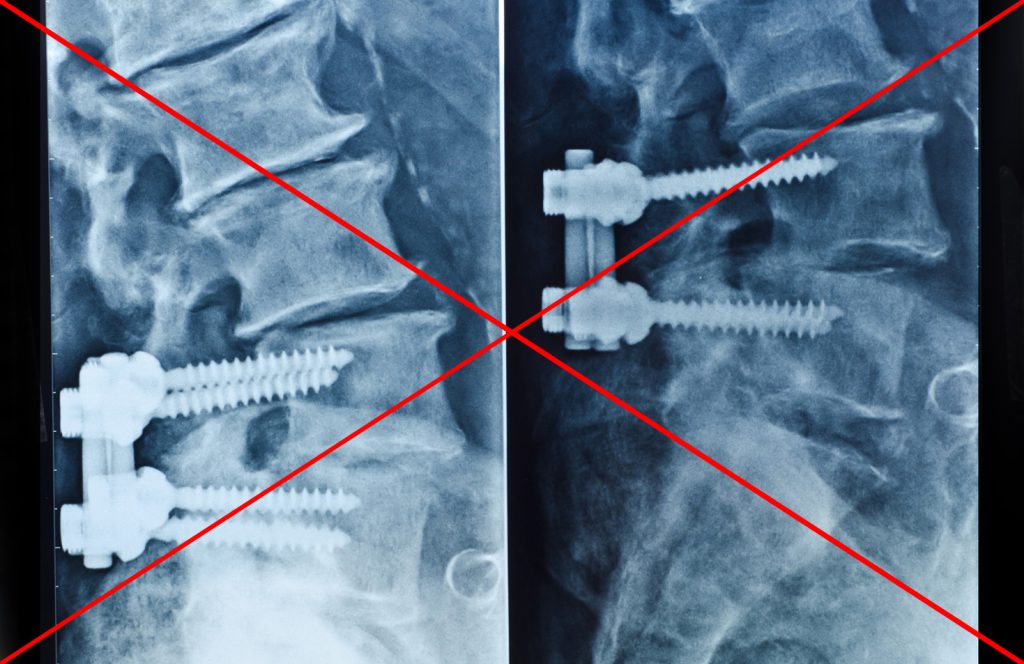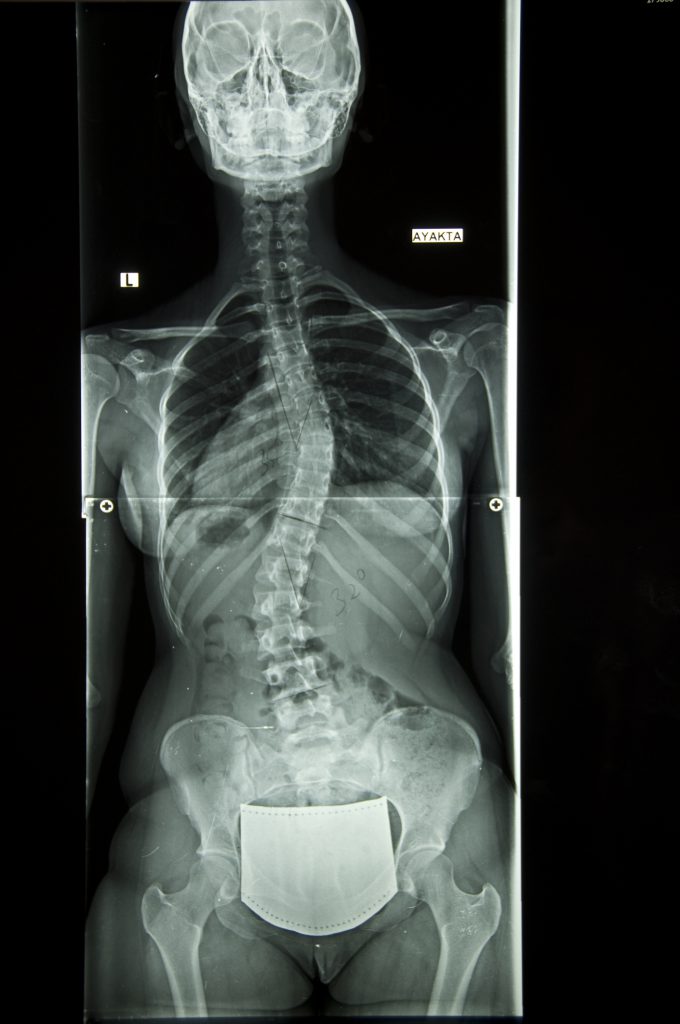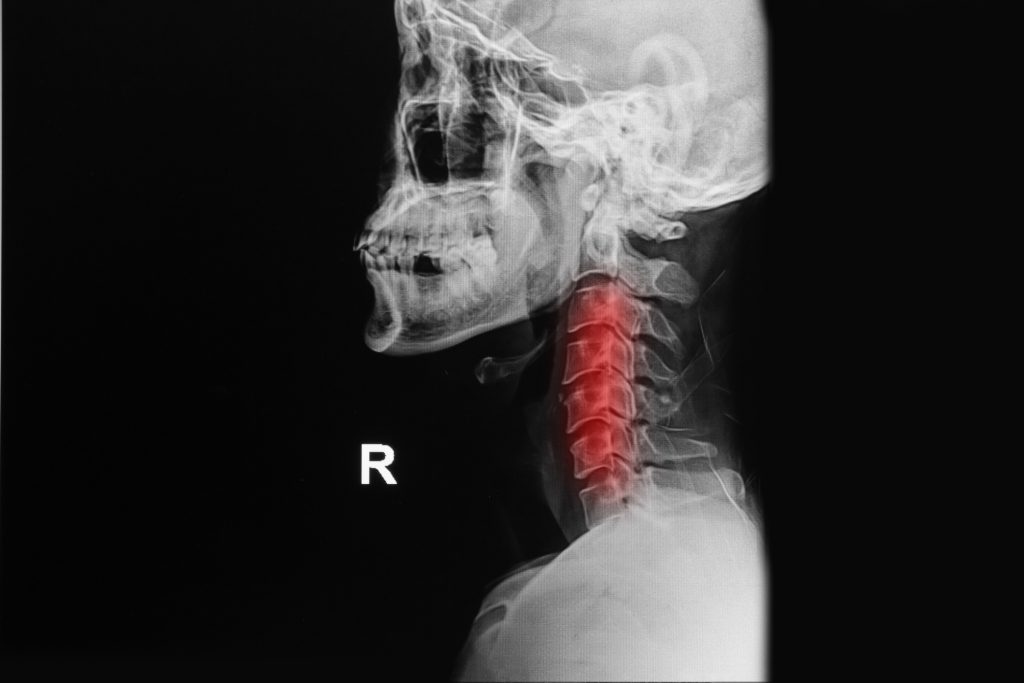Why settle for traditional spine surgery?
TOP: Preoperative (Left) and Postoperative (Right) Sagittal MRIs demonstrating severe spinal stenosis and compression of the spinal nerves on the left and significantly increased space for the nerves on the right after surgery. The spinal canal is outlined in red.
BOTTOM: Preoperative (left) and Postoperative (right) MRI after Microendoscopic decompression surgery demonstrating relief of spinal stenosis and decompression of the spinal nerves after surgery. The enlarged spinal canal is outlined in red. After surgery, the nerves (black) have a significant amount of available space demonstrated by the presence of fluid (white) within the canal. Preoperatively, the patient suffered from severe back and leg pain secondary to spinal nerve compression. After surgery they had relief of their preoperative back and leg pain and were discharged from the surgery center within hours of the procedure.



